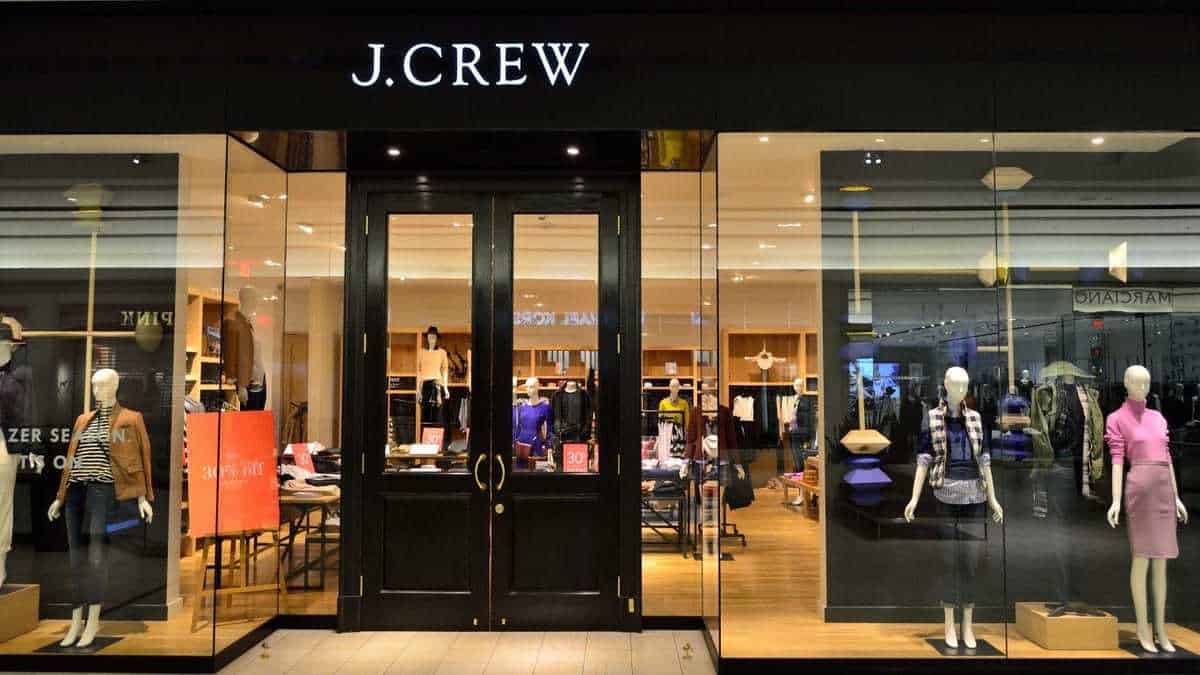It’s week 3 of our 5 week blog mini-series: #fiveweeksoffails. We’re digging into some of the biggest names in fast fashion, helping you sort out what’s real progress and what’s meant to greenwash away consumer guilt.
Following our extensive sustainable brand criteria, each brand will receive scores for transparency, maker well-being, environmental sustainability, material sustainability, and leadership. For a brand to be considered sustainable, they need to score at least 50 points out of 100.
The third brand of the series is the pinnacle of prep: J. Crew.

If you were to go to your local mall, it’s likely you’d stumble across a J. Crew somewhere between the pretzel stands and mini kiosks. They currently operate more than 450 stores across the United States, with even more outlets or J. Crew Factory stores.
While their financial efforts are undeniable, do their sustainability efforts measure up?
THE RESULTS
Transparency: 2/15
A common issue with these large fashion retailers is a lack of publicly available information. And if we learned anything from disasters like Rana Plaza it’s that transparency is the first step towards more ethical supply chains. We need to see it to believe it.
When it comes to transparency, J. Crew does address the risk of subcontracting, which can involve potential negligence and substandard working conditions. Their website says they send out independent inspectors to review all of their subcontractors.
However, they don’t specify how often these inspections happen. They also don’t disclose any information about the conditions in their factories or even the locations of their factories. This makes it impossible for us to track their supply chain traceability.
Overall, the information provided on J. Crew’s website was pretty sparse. They’ll need to provide a lot more if they want to improve their transparency score.
Maker Well-being: 11.5/33
J. Crew outscores both Zara and Express when it comes to maker well-being. But that’s not saying much.
The biggest source of points for J. Crew is their wellness programs. The company institutes the HERproject program at its factories, providing peer mentoring to their majority female workforce.
The project focuses on teaching low-income workers health and nutrition, reproductive and maternal health, and leadership skills. That being said, it isn’t clear how many factories are involved in the project. In addition to the HERproject, J . Crew has a solid code of conduct meant to protect workers, however, it is unclear how often subcontractors are audited for compliance so they only receive half credit when it comes to enforcement of the code.
To improve this score, J. Crew needs to institute some more ambitious policies. For example, they could commit to sourcing over 50% of their clothes from factories that pay their workers a living wage. Or they could ask the majority of their factories to invest in community wellness projects. With their massive size, these changes could make a huge difference in the lives of makers.
Environmental Sustainability: 6/33

When it comes to sustainability, J. Crew is more show than substance.
The good: J. Crew has banned sandblasting, an incredibly dangerous technique often used to distress denim, at all of their factories. They have taken steps to reduce their landfill waste with their reuse and recycling program.
The bad: There is no evidence J. Crew is working with the majority of its factories to move toward renewable energy. They haven’t made any commitments to eliminate harmful chemicals.
The company isn’t taking big enough steps to invest in closed-loop production (a process that maximizes the sustainability and lifespan of a product), which could allow them to massively reduce their environmental impact. Their website states that they are trying to reduce water use in production but there isn’t sufficient information on how much water they use or how they aim to reduce it.
Leadership: 0/5
This is a difficult category to score points in. Even many of our most sustainable brands struggle to get full credit.
That being said, J. Crew falls far behind what we consider sustainable brands. With the overwhelming amount of their catalog made unsustainably, we can hardly call them a leader in this field.
Overall: 19.5/100
J. Crew scored a 19.5 on our criteria which means at present J. Crew is can only be deemed an un-sustainable brand. Their lack of transparency and underwhelming commitments to environmental sustainability dragged their score down.
We would like to highlight that they have made some steps to protect maker well-being, but they haven’t done nearly enough to pass the test. If you’re looking for a sustainable outfit, J. Crew is not the place for you.
Want to see more brand reviews? Check out our first two brands of #fiveweeksoffails: Express and Zara.
Looking for Ethical Alternatives to J. Crew?
Check out our directory of 90+ stylish and certified sustainable brands.
*Featured image “J Crew JCrew Store” by JeepersMedia is licensed under CC BY 2.0.

Lily Rosen Marvin studies English and Creative Writing at the University of Iowa. When she’s not writing about sustainable fashion, Lily can be found hiking, reading outside, or binge-watching 30 Rock.









